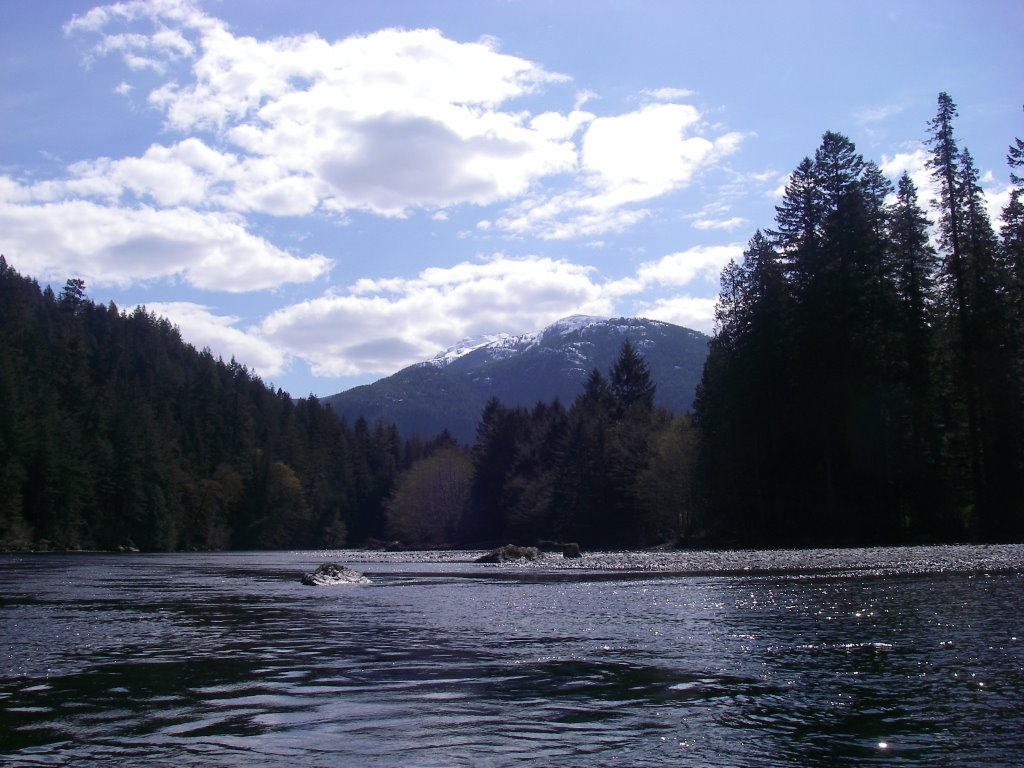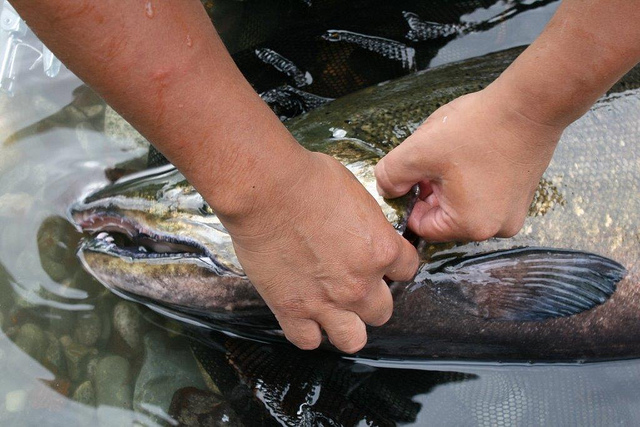
30 Nov Assessing salmon’s likelihood of survival
Uu-a-thluk Northern Region Biologist Roger Dunlop and the Mowachaht/Muchalaht fisheries staff have been carrying out Chinook salmon assessments on the Burman River to determine the population size, the best way to count them, and investigate the effect of fall flood timing on how long the fish survive in freshwater. Located on the west coast of Vancouver Island, in the Mowachaht/Muchalaht First Nation Ha-houlthee (traditional territory), the Burman River flows into Muchalat Inlet from its origins in Strathcona Park.
Since 2009, members of Uu-a-thluk and Mowachaht/Muchalaht fisheries have conducted studies on the river as part of an international initiative of the Pacific Salmon Commission to practice science based conservation and sustainable harvest sharing to ensure healthy salmon stocks, and an adequate return to their place of origin. This project has been funded by the Southern Endowment Fund since 2014 and is a continuation of other studies from 2009-2013 that the Sentinel Stocks Program funded to improve assessment of Chinook salmon along Vancouver Island’s west coast as outlined in the Pacific Salmon Treaty between Canada and the U.S. The Pacific Salmon Treaty is awaiting renewal at the end of 2017.
Using a method called mark-recapture, Dunlop has observed that the spawning longevity of these fish may depend on flood timing that governs when they can enter the rivers’ spawning area after spending time adapting their osmoregulation* to freshwater near the estuary. The study in the Burman River over the past seven years showed that with delayed flows over time the condition of fish deteriorates. “If they’re delayed entering the spawning grounds then they may only live there for a period of a few days,” said Dunlop. Rain timing delays, and in many cases a lack of large wood in the channel and on the banks, excessive runoff and gravel from logging have altered stream channel dynamics, and all play a role in delaying fish from entering the more limited spawning grounds.

Tagging a Chinook salmon on the Burman River.
Mark-recapture refers to when a portion of the population is captured, marked, and then released. At each subsequent sampling event three to four days per week more fish are marked and the identities of individual live fish recaptured are recorded and assembled into a capture history of each fish. These data are used to validate the necessary assumptions, estimate daily survival and capture rates, and to estimate population size. These modern methods summarize the number of new entrants to estimate total population size. Later, other methods are applied to the same data to estimate how long the fish waited before entering the spawning area.
“We use the population evaluations to get an estimate of the residence time of salmon in the spawning area of the river where they’re normally counted,” he said. “Now we know from the date of the first flood approximately how long these ocean-type Chinook are likely to live on average that year and not have to measure it for the Burman River with expensive radio tags,” explained Dunlop.
“If the first rains come before all the run has arrived, those (few) early fish can have a longer residence time but they may not be the bulk of the population that comes later nor have a large effect on average survey life,” he said. “It all boils down to how much fat a salmon has aboard before it starts the process of adapting to freshwater, maturing and spawning, and how long that takes because they are not eating, and their fuel supply is finite.”
The project on the Burman River tells Dunlop and the Mowachaht/Muchalaht Nation that the longer the fish are delayed by the water can impact the length of time the fish live on spawning grounds. Although this is just the first step in the process of using this information as a tool to help direct aquatic management decisions on the west coast of Vancouver Island. “We want to see if it works at other rivers, and if similar relationships exist for other species in medium to small coastal streams. If it does then this will provide information for more precise but less costly management than what we have used in the past,” said Dunlop.
*Osmoregulation: the maintenance of osmotic pressure in the fluids of an organism by the control of water and salt concentrations.
By Uu-a-thluk
With permission from the author, this article was reproduced from Ha-Shilth-Sa; The featured image shows the Burman River, which flows through Mowachaht/Muchalaht territory.


